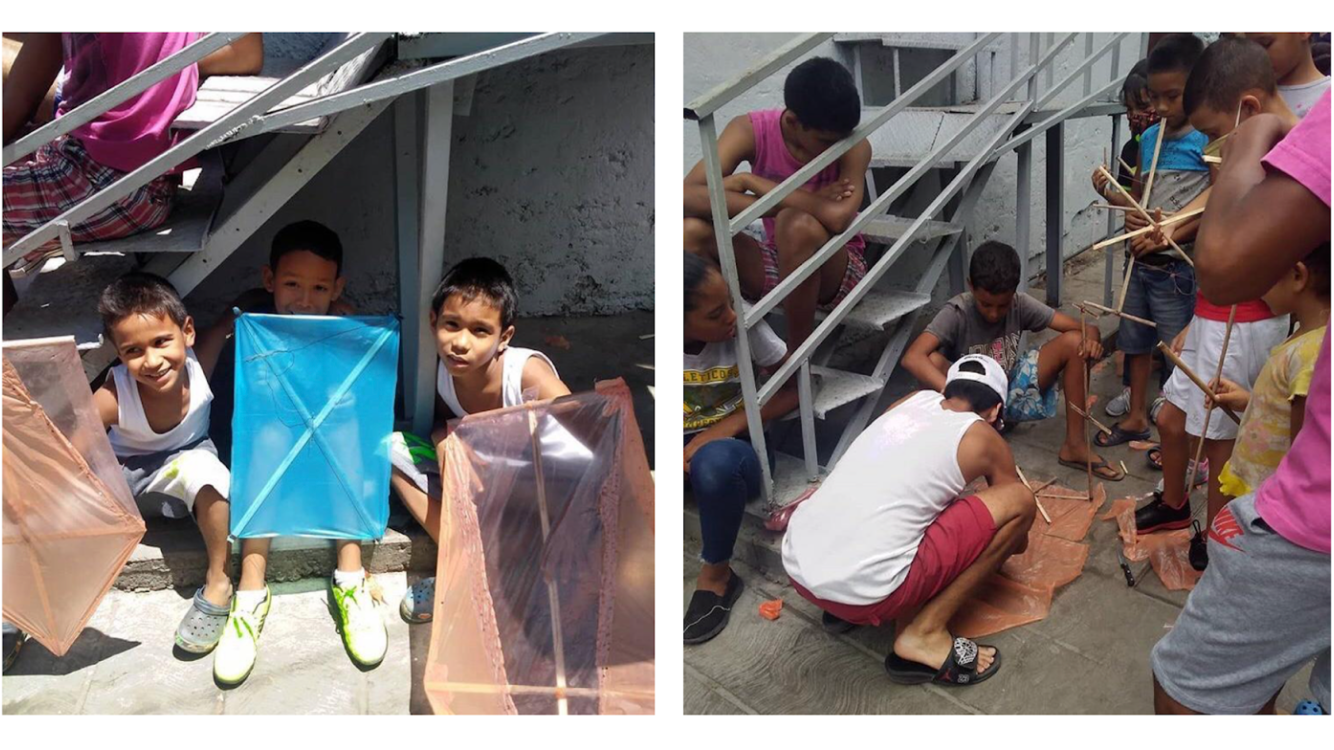Flying Kites in El Cementerio
For the young men of impoverished areas everywhere, crime is a way into peer acceptance and respect. But in a Caracas barrio, children are breaking that cycle in quite creative ways


Photo: Sofía Jaimes Barreto
In the community of El Cementerio, violence is an everyday thing, always unpredictable, perpetually terrifying. Young boys, armed to the teeth, show their high-caliber firearms with no regard for who might be watching, and police forces target the residents just because of the way they look and where they’re living. Every family has a story marked by homicide and bereavement, especially punishing for children, who are sensitive and worried by the never-ending cycles of death and violence.
Nonetheless, the community refuses the idea of turning into an actual cemetery of the living. New ways of positively influencing this town arise through simple acts and, during the quarantine, two of our community leaders, Saray and Jhonderwing, observed how kids fly kites from the roofs of their houses.
The constant power cuts, the inability to play outside, and the crude reality of their community, leads these kids to find new ways of entertaining themselves. For us, in Caracas Mi Convive, hearing their story is like watching a little stream of water that makes its way through stones.
El Cementerio, named because of its close location to the Cementerio General del Sur, one of the oldest cemeteries in the capital, houses around 47,000 people, along with its neighboring community, La Cota 905. The 2019 report by Monitor de Víctimas ranked Santa Rosalía as the 11th parish with the highest number of homicides; 76% of them occurred in El Cementerio.
The area harbors one of the best organized and most important gangs in the city, with roots in the official strategy against crime in 2015: the designation of El Cementerio and other communities in Caracas as Zonas de Paz, places that police forces couldn’t enter as long as the gangs kept themselves civil, away from violent crime. Seriously. The result was an upsurge of authentic criminal insurgency, where megabandas had total control over their territories. Violent police operations have taken place since 2016 as an attempt to recover these areas, but the gangs got larger and better armed against raids where guilty and innocent people suffered alike.

Out of their usual options for entertainment, the children of El Cementerio become beams of light amid the violence.
Photo: Saray Figueredo
During one of these events, Saray lost her brother. Community activism has become her coping mechanism; Jhonderwing, on the other hand, is an amateur basketball player that embodies how sports can save lives. However, this hasn’t kept him away from grieving many friends who have become part of the homicide figures. More than half of the victims fit Jhonderwing’s profile: young men between 15 to 29 years of age, residents of barrios like El Cementerio. In such a reality, kids become beams of hope. They represent the opportunity to choose a different path, to imagine a better future for the community.
When Jhonderwing and Saray saw them playing, they also saw a chance to introduce them into an activity to promote engagement for the entire community: a kite tournament.
In a community where people are reluctant to leave their houses, besieged by criminals of all sorts, these activities represent a rare moment where the whole family participates and helps children build their kites (social distancing, of course).
Jhonderwing explains his joy:
“Everybody wanted to join in, there was even this teen at risk of joining a gang, an unemployed school dropout. All the community looks down on him because they expect him to become a criminal. But he joined us and helped the kids make their kites! I’m not saying this means he’ll take a better path, but it’s a nice first step.”
After that, each kid went to their rooftops and flew the kites, competing, trying to entangle the other kites’s strings with their own; the more kites you pull, the better you are. This competition has become a new sport in the community. Neighbors know what kids are the better pullers, and congratulate them on the streets. This generates some respect and other children want to build and fly their own kites.
This might look like a simple game but, in El Cementerio, the admiration follows particular dynamics. From a very young age, these boys are exposed to many traumatic and violent experiences. Many times, they perceive they can get the respect of their peers by joining the violent path. They start taking drugs or doing favors to gang members and, even if the neighborhood disapproves, they gain street cred as “serious kids.”
Now, they’re becoming the best pullers instead of serious kids. They feel approved and supported to join in community activities which open a path away from violence. As Jhonderwing says, there’s no guarantee that they’ll stay away from gangs but it’s a way into a different set of values.
This is just one of the many examples of how Caracas resiliently fights back violence and the pandemic at once. May these children develop and fly as high as the kites they make.
Caracas Chronicles is 100% reader-supported.
We’ve been able to hang on for 22 years in one of the craziest media landscapes in the world. We’ve seen different media outlets in Venezuela (and abroad) closing shop, something we’re looking to avoid at all costs. Your collaboration goes a long way in helping us weather the storm.
Donate




